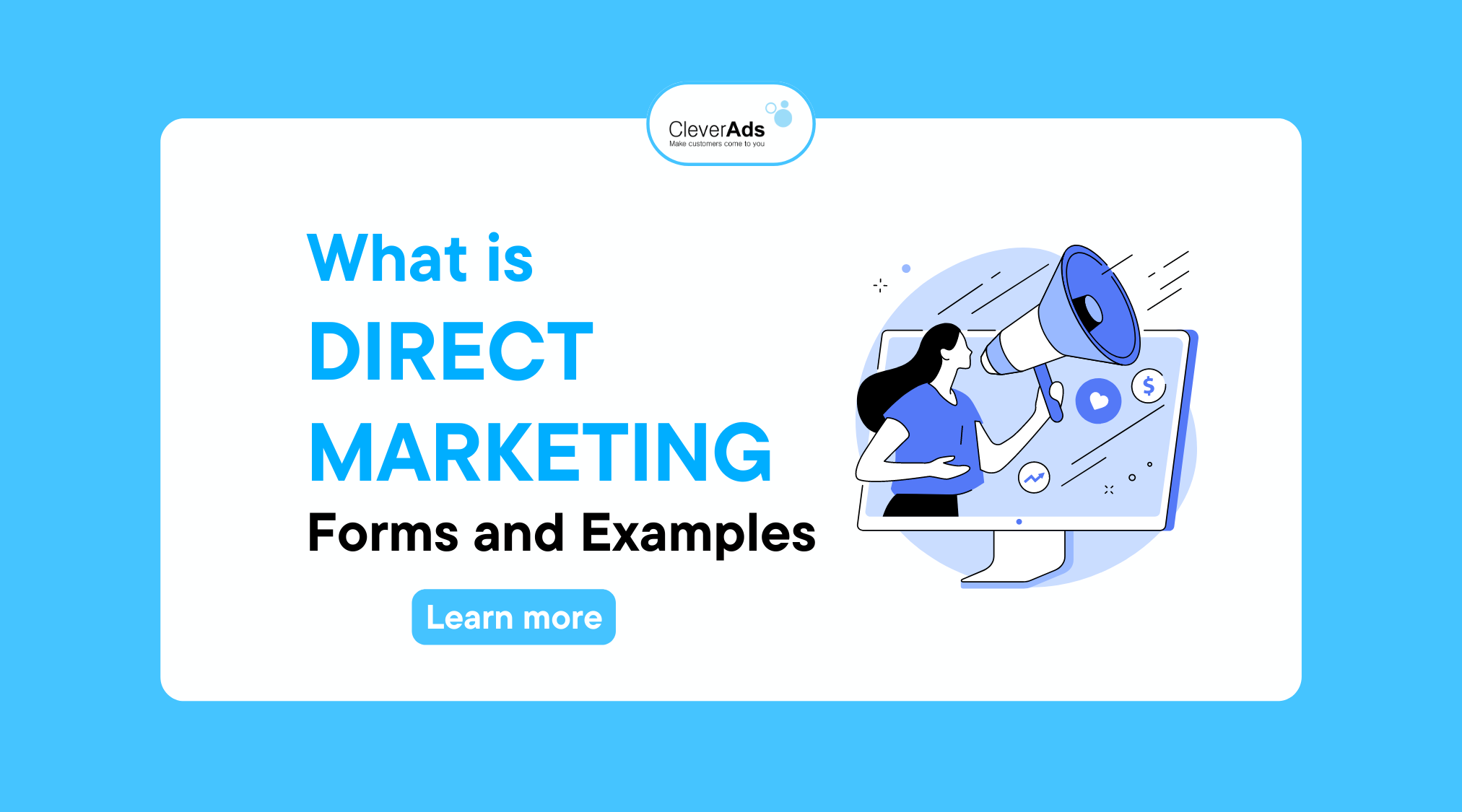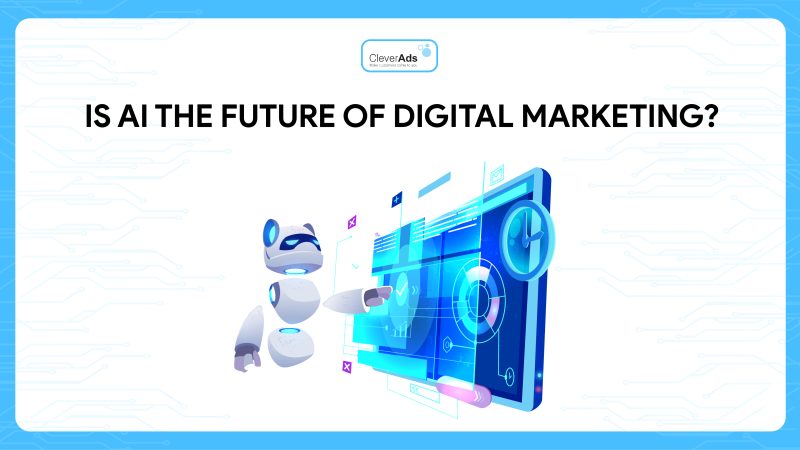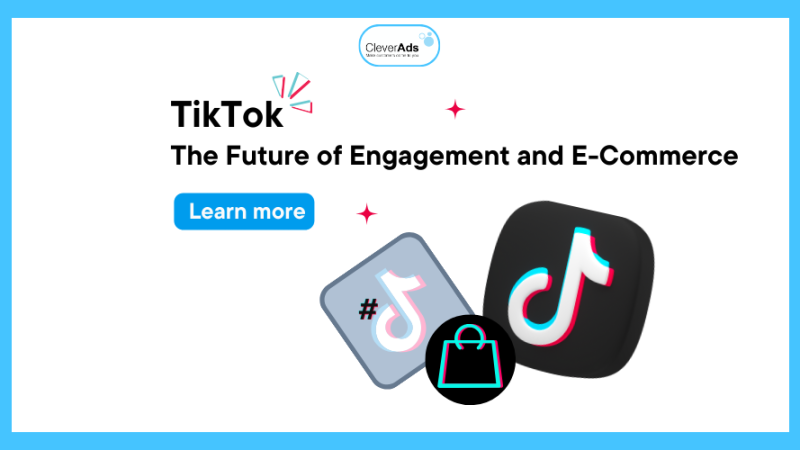What is Direct Marketing? Forms and Examples

What exactly is direct marketing, and how to strategize? For starters, this is one of the most effective marketing methods and has many benefits, including clearly measurable results. In this article, CleverAds will explain the concept of Direct Marketing, categorize the forms, and give a few examples of successful campaigns using Direct Marketing.
1. What is direct marketing?
Direct marketing is a marketing campaign to build a personal relationship between a customer and a business. In a direct marketing campaign, companies work directly with customers or pre-selected customer segments through one or more marketing channels. Its main feature is an immediate response – participating organizations must establish a means for customers to connect directly with their marketing activities, especially with purchase orders and requisitions.
Direct marketing differs from traditional advertising mediums that convey messages on a one-to-many basis. In conventional advertising platforms (billboards, print media, broadcast ads, etc.), a business spreads its advertising message through intermediaries to many consumers, hoping that some consumers who see ads will search for products and companies. Direct marketing usually occurs directly between the marketing business and the customer, without sending bulk messages or using intermediaries.

2. Forms of Direct Marketing
Direct marketing includes direct advertising and direct distribution. For a successful direct marketing campaign, an organization must have the infrastructure, data, and processes to effectively reach its target customers with personalized messaging and deliver goods and services—service to buyers with high customer service.
Channel selection and development is the first task of direct marketing. Businesses must identify marketing channels to reach potential customers directly with information and offers about products and services. The most common forms of marketing include:
2.1. Direct mail marketing
Direct mail marketing is mail that advertises a business and its products and services. There are different types of direct mail: catalogs, postcards, and envelopes. Direct mail campaigns are typically sent to all postal customers in an area or to all customers on a marketing list.
2.2. Telemarketing
Telemarketing involves contacting potential customers over the phone to sell products or services. It can generate new leads in bulk and is also helpful for tracking direct marketing campaigns. However, telemarketing success involves planning, using accurate customer data, and thorough research to match customer profiles with product profiles.

2.3. Send email
Email marketing is a simple, cost-effective, and easily measurable way to reach customers. Emails may include e-newsletters, promotional emails to generate leads, offers for existing customers, or advertisements in other businesses’ emails.
2.4. Marketing via SMS
Text marketing allows businesses to reach individual customers and send messages to large numbers of customers at a low cost. You can use the short message service (SMS) to send customers sales announcements, links to your website, appointment reminders, deliveries, or other personalized messages.
2.5. Marketing at home
Door-to-door leaflet marketing includes the distribution of beautifully designed flyers through mailboxes and handouts. This form works effectively with local businesses whose products and services attract a broad audience. This is a simple, cheap, and effective way to reach customers, although it is a less targeted form of direct marketing.
2.6. Direct marketing through social networks
Marketing through social networks (Social media marketing) is an effective marketing tool for businesses because of the opportunity to interact directly with customers and often share information about products and related services it brings. Social media platforms also make it easy for customers to share your content, increasing the reach of your content exponentially. Develop social media profiles for businesses to promote products and services and encourage customers to provide feedback by leaving comments.

2.7. Direct sales
Direct selling is a flexible, low-cost way to grow your business. Direct selling is when an independent salesperson sells products or services directly to customers, usually at the customer’s home or workplace. Traditional natural selling methods include door-to-door sales, promotional events, and network marketing.
3. Examples of Direct Marketing
Direct marketing campaigns want to create a reaction with their target audience using content delivered directly to offline and online consumers. An outstanding graphic publication, a surprising product, or a heart-touching video can get a direct response from the consumer. Below, CleverAds looks at two exceptional examples of direct marketing:
3.1. Toyota
Toyota is launching a direct mail marketing campaign to promote its models with optimized powertrains as standard and to encourage potential car buyers to test drive these vehicles.
The automaker targets people between the ages of 45-64, who tend to replace their cars every three or four years and plan to buy in advance. The campaign aims to promote the environmental ethos of the Optimal Drive models, resulting in better fuel economy and lower CO2 emissions.
The campaign created by the Kitcatt Nohr Alexander Shaw company aims to promote offers on eight Toyota models with Ultimate Drive, including the new Aygo, Yaris, Avensis, iQ, and Urban Cruiser. They also offer a £10 Marks and Spencer voucher for each Optimal Drive test drive by appointment.
3.2. Touch Branding
Touch Branding is a Branding Marketing Agency based in Prague with over 15 years of experience in global campaigns. They have one of the best examples of Direct Marketing:
They created a Direct Marketing campaign with the tagline: “We’ll give our blood for good branding” and created an image that illustrates the message. . They attach “blood bags” (fake blood) to the letters for direct mailing.
They also support many direct mail marketing campaigns with tailored email and banner campaigns on the website. This is a great way to turn potential companies into customers!
4. Conclusion on Direct Marketing
Direct marketing gives businesses complete control over the customer experience, enhances brand loyalty, and collects valuable customer data to optimize marketing spend and return on investment.


